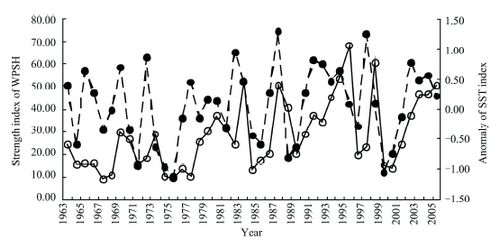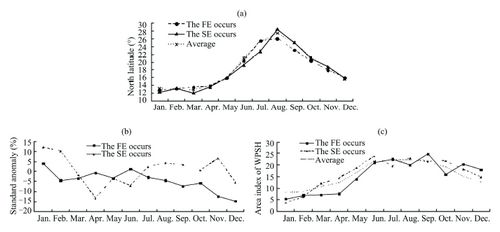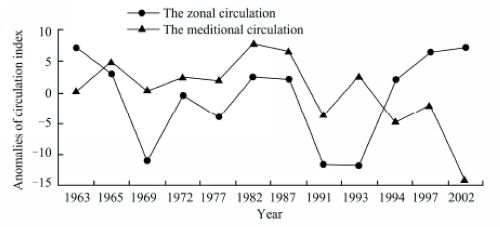Influences of two patterns of El Nino on hydrological and meteorological elements in the Hexi Corridor region of China
Updatetime:2012-12-25From:
【Enlarge】【Reduce】
In this study, two types of El Niño events are distinguished and the correlations between the respective precipitation, temperature,and runoff are analyzed by a 5-point moving average method. Also, changes of the temperature, precipitation, and runoff from mountainous watersheds of the Hexi Corridor region caused by these two types of El Niño events from 1959 to 2005 are studied by the anomaly analysis method. The results indicate that the Hexi Corridor region is strongly influenced by El Niño: rising temperatures and decreasing precipitation and runoff are features of the first El Niño pattern, while decreasing temperature and increasing precipitation and runoff characterise the second pattern. The responses of temperature to El Niño events are stronger in plains than in mountain regions, but the responses of precipitation are obvious in both types of regions. The response of runoff to El Niño events is lower than the precipitation and temperature response because runoff from mountainous watersheds has a complex generation and concentration process.
The strong effects of two types of El Niño events on precipitation, temperature, and runoff in the Hexi region of China are significantly different. The main conclusions of this study are:
(1) When FE events occurred, the study areas were drier and had higher temperature and less runoff; in contrast, there were more precipitation and lower temperature when SE events occurred.
(2) In the years when FE occurred, the WPSH was weaker, making it difficult for warm, humid air of the Pacific to reach the study area. Also, in FE years the westerly zonal circulation formed relatively little frontal rain, so there was scarce precipitation in the study area. In the years when SE occurred, the westerly meridional circulation formed more frontal rain, resulting in ample precipitation in the study area when the cold westerly met the warm and humid air of the Pacific.
Research on the influence of El Niño on hydrometeorological elements, especially the inland mountain runoff in the Hexi corridor, has great significance in further understanding changes in climate and water resources in that region.It should also be noted that terrestrial and atmospheric exchange of water and heat in the Qinghai-Tibet Plateau, the southwest monsoon, and air-sea interactions also have important impacts on climate change in the study area, which warrant separate study. Evaluating the combined effects of these various elements on climate change in the specified area is still very difficult, and there are many questions still need to be answered.

The evolution of West Pacific subtropical high intensity index (solid line) and SST index (dashed line) in 1963–2005

Annual change of ridge line (a), western ridge point (b), and area index (c) of the Western Pacific Subtropical High

The features of circulation in the middle and high latitudes in Eurasia when El Niño occurs
Appendix





